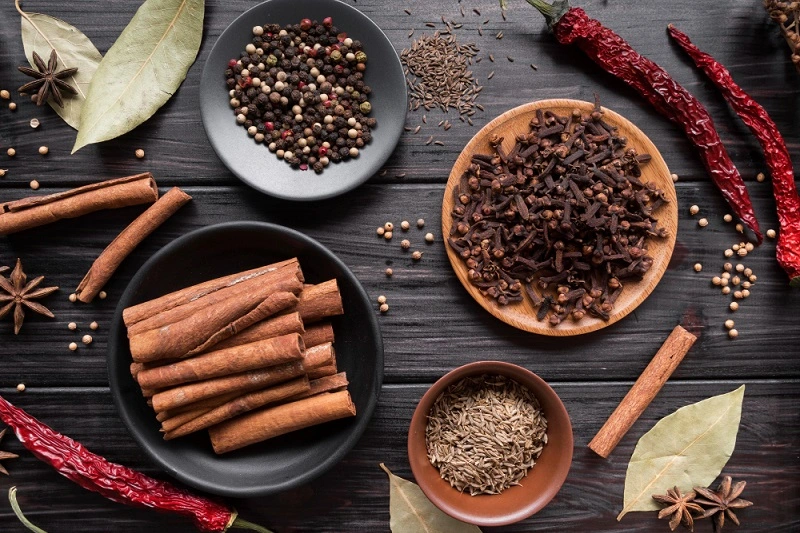Spices have been integral to culinary traditions worldwide, adding flavor, aroma, and uniqueness to dishes. Among the plethora of spice-producing countries, India stands out as a prominent exporter, renowned for its rich and diverse spice offerings. Importing spices from India can be a lucrative venture for businesses seeking to diversify their product range or enhance their culinary offerings. However, navigating the intricacies of international trade, regulations, and sourcing can be daunting. In this article, we’ll delve into the step-by-step process of importing spices from India, ensuring a smooth and successful endeavor.
Understanding the Indian Spice Industry
India boasts a centuries-old tradition of spice cultivation, with a geographical diversity that supports the growth of various spices. From the fiery heat of chili peppers to the exotic fragrance of cardamom, the country produces an extensive array of spices coveted worldwide. Understanding the nuances of the Indian spice industry is crucial for importers, as it enables them to make informed decisions regarding sourcing, quality assessment, and market trends.
Market Research and Product Selection
Before embarking on the importation process, thorough market research is imperative. Identify the specific spices in demand within your target market and assess their potential profitability. Consider factors such as consumer preferences, culinary trends, and existing competition. Additionally, delve into the regulatory requirements and import restrictions governing the importation of spices into your country.
Finding Reliable Suppliers
Establishing partnerships with reputable suppliers is paramount to the success of your spice importation venture. In India, numerous spice exporters operate across the country, each offering a diverse range of products. Conduct due diligence to ensure that your chosen suppliers adhere to stringent quality standards, possess necessary certifications, and have a track record of reliability and integrity. Direct communication and site visits can help build trust and foster long-term relationships with suppliers.
Quality Assurance and Sampling
Maintaining consistent quality is non-negotiable when dealing with spices, given their impact on culinary experiences. Request samples from potential suppliers and subject them to rigorous quality testing. Assess factors such as aroma, flavor, color, and purity to ascertain the superiority of the products. Collaborate with accredited laboratories for comprehensive testing and verification, ensuring compliance with international quality standards.
Negotiating Contracts and Terms
Once satisfied with the quality of the samples, negotiate contracts with your chosen suppliers. Clearly outline terms regarding pricing, payment terms, delivery schedules, and quality assurance measures. Pay careful attention to clauses pertaining to product specifications, packaging requirements, and dispute resolution mechanisms. Engage legal counsel to draft watertight contracts that protect your interests and mitigate risks associated with international trade.
Regulatory Compliance and Documentation
Navigating the regulatory landscape is a crucial aspect of importing spices from India. Familiarize yourself with the import regulations, tariffs, and documentation requirements applicable in your country. Obtain necessary permits, licenses, and certifications mandated by regulatory authorities to facilitate smooth customs clearance. Ensure that all documentation, including invoices, packing lists, certificates of origin, and phytosanitary certificates, is accurate, complete, and compliant with international standards.
Shipping and Logistics
Selecting the appropriate shipping method and logistics provider is essential for ensuring timely and cost-effective delivery of your spice consignments. Evaluate options such as sea freight, air freight, or multimodal transportation based on factors like volume, urgency, and budget constraints. Collaborate with experienced freight forwarders who specialize in handling perishable goods and have a proven track record of reliability and efficiency.
Customs Clearance and Inspection
Upon arrival at the destination port, your spice consignments will undergo customs clearance and inspection procedures. Work closely with customs brokers to facilitate smooth clearance by providing accurate documentation and complying with import regulations. Be prepared for inspections by regulatory authorities to verify the quality, quantity, and compliance of the imported spices. Address any discrepancies or issues promptly to avoid delays and ensure seamless entry into the market.
Marketing and Distribution
With your spice consignments successfully cleared through customs, shift your focus to marketing and distribution strategies. Leverage digital platforms, trade shows, and culinary events to showcase the unique attributes of your Indian spices and attract potential buyers. Collaborate with distributors, retailers, and foodservice establishments to expand your market reach and penetrate diverse consumer segments. Invest in branding, packaging, and promotional activities to differentiate your products and create a lasting impression on consumers.
Conclusion
Importing spices from India offers abundant opportunities for businesses seeking to capitalize on the country’s rich culinary heritage and diverse spice offerings. By following the step-by-step guide outlined in this article, importers can navigate the complexities of international trade, ensure quality compliance, and establish successful partnerships with Indian suppliers. With diligence, foresight, and strategic planning, importing spices from India can be a rewarding endeavor, enriching culinary experiences and satisfying the palates of consumers worldwide.


